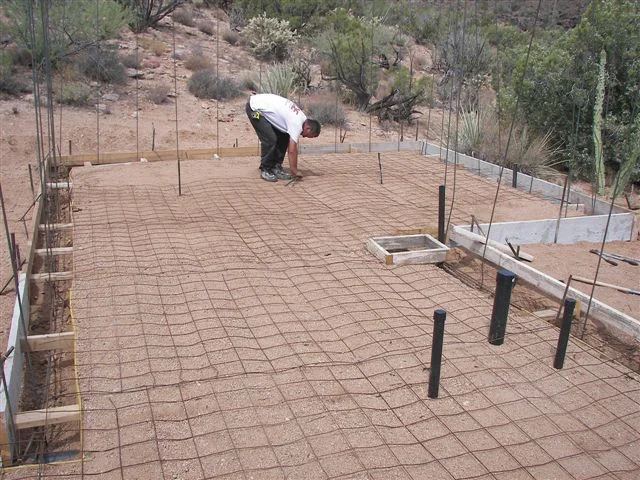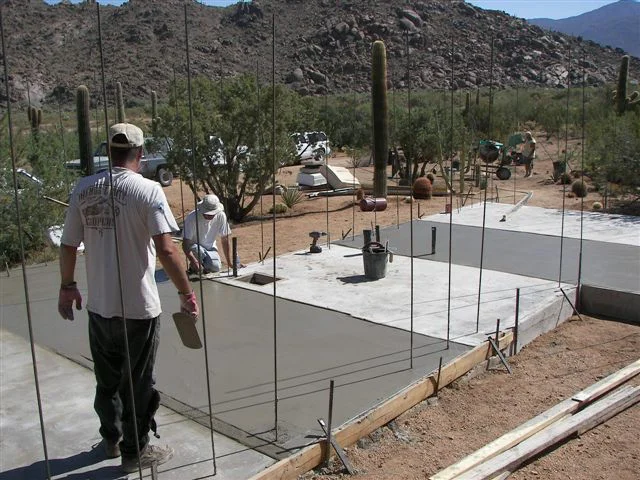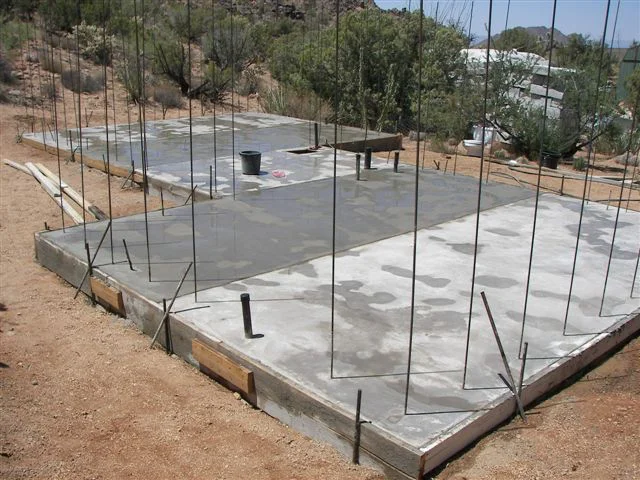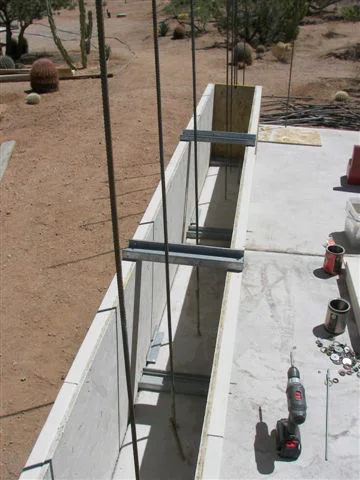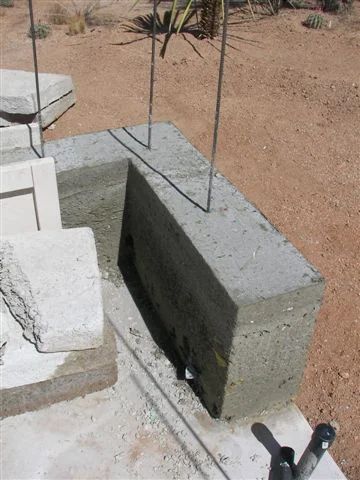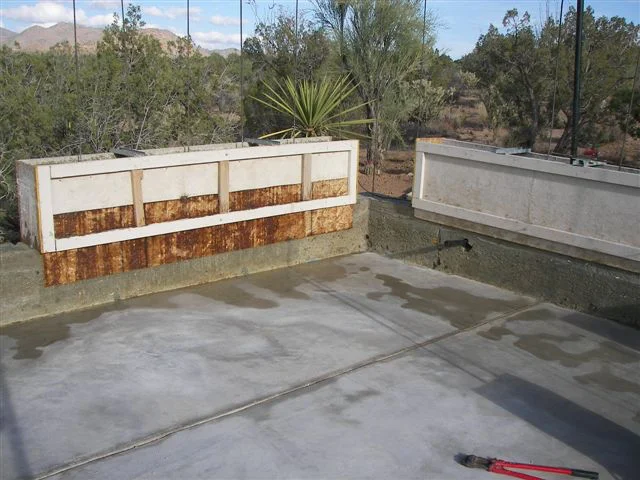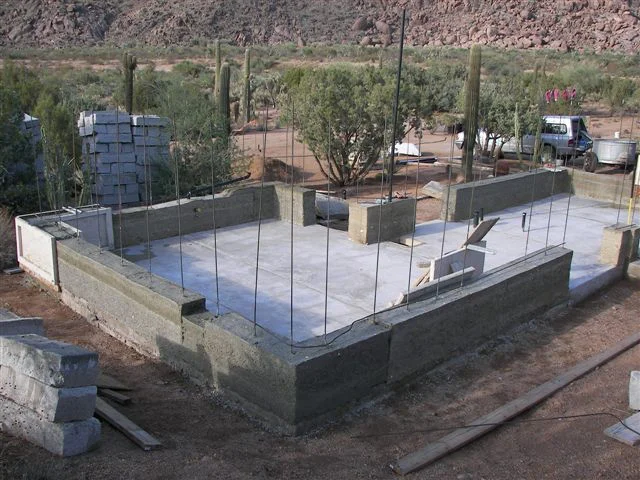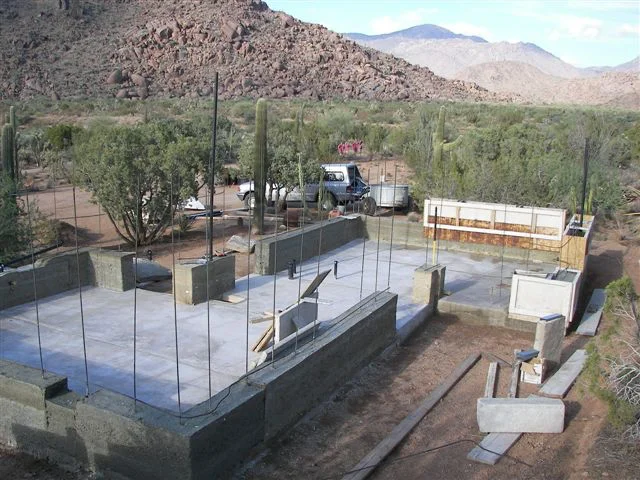Destination: Forever Ranch & Gardens
Papercrete
Papercrete As A Building Method
Since we at D:FR are interested in everything different, it only seems natural that we would choose to use one of several unusual construction techniques. We have researched everything from straw bales to rammed earth, adobe to earthbags, polyurethane foam domes to recycled tires, and cob to cordwood logs. All these alternative building systems have their benefits and their drawbacks. What they all have in common, however, is that they make primary use of locally available materials, whether those materials are natural or man-made waste products. (The only exception listed above is polyurethane foam.) The main advantages to locally available materials is that they are either cheap or free, in most cases they are non-toxic and energy efficient, and they tend to give a regionally appropriate look to the structure. These uncommon construction modes do not come without some problems, however. Some issues alternative builders may face include resistance in approval from county or city building inspectors, a lack of financing from traditional lending institutions, and local subcontractors' unfamiliarity with weird buildings and their subsequent reticence in doing work on them.
Here at D:FR we have settled on a method of construction known as papercrete. Papercrete, also known by the various monikers of fibrous cement, fibrous adobe, and cellulose-reinforced cement, is basically an industrial-strength papier-mache made of pulped waste paper (newsprint, junk mail, magazines, phone books, anything papery), Portland cement, and sometimes sand. A special mixer is designed to chop the paper in water, blender-style, into a slurry using a spinning blade in a round tank of some sort, like a 200-gallon stock tank.
Once the paper is thoroughly masticated, Portland cement is added to bind the paper fibers together, and sand adds strength and thermal mass. We've decided to eliminate the sand portion of this recipe, with no apprent ill effects. The final mixture looks much like concrete, but it is much lighter. It pours the same way, however, which is what you do into block forms on the ground. Papercrete can also be poured into slip forms directly onto the walls, or it can be hurled or sprayed onto a wall of another material (such as straw bales). It can even be used as exterior and interior stucco if the cement content is doubled. It is amazingly versatile stuff, this papercrete.
Excess water drains out of papercrete in a matter in minutes, while the rest eventually evaporates into the air. Once fully dry, the resulting material is honeycombed with millions of tiny air spaces, a property that results in marvelous insulation value (at least R2.5 per inch, often more like R3) as well as a relatively light weight. The fibers encased in a cement coat also give the papercrete good strength. Although its compressive strength is only about 10% of the value of ordinary concrete, that still means about 300 psi, which is, in other words, far beyond that necessary for a typical one-story building. No one is suggesting building skyscrapers out of papercrete, in any event.
There are several reasons why papercrete was chosen as our building method at D:FR. One is the fact that waste paper is plentiful and absolutely free given the wasteful nature of our consumer economy. In fact, landfills everywhere are gagging on millions of tons of the stuff daily, enough to build entire villages every week. The insulation value is extremely good, which means much less energy is needed to modify temperatures in either direction from a comfortable range. It is flexible. You can pour it, slap it, throw it, and trowel it. You can make bricks, panels, blocks large and small, make walls, and make roofs.
You can screw screws and hammer nails into it. Forgot to add a window to that room? No problem, just chainsaw one out where you like. Make the walls first and cut grooves later to lay the wire conduit and outlet boxes, using the same chainsaw. Ditto to enlarge the door frame if you haven't decided on single or double. Lay your papercrete blocks in your walls, then mortar them together with papercrete mortar, and then cover your irregularities with papercrete stucco. Make domes, arches, vaults, benches, niches, buttresses, garden walls, and turrets. Seal the roof with silicone-based water sealant or an elastomeric paint, and you ought to be done. Clean, green, and creative, what more could one ask?
For more information and to see some other great homes made out of papercrete, visit www.livinginpaper.com.
The following gallery showcases the construction of my papercrete home.
